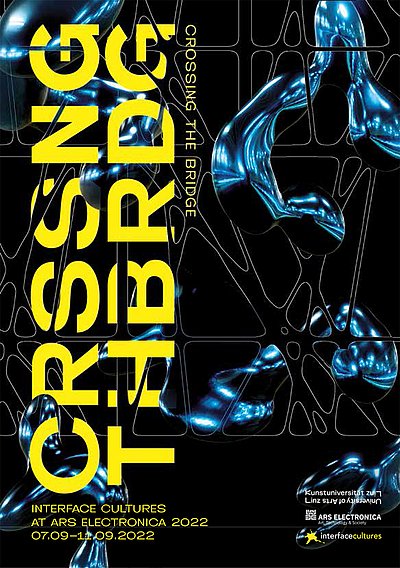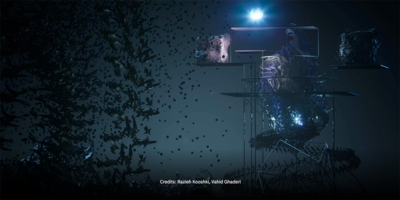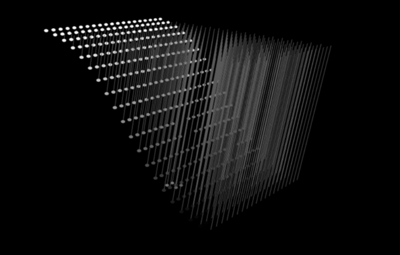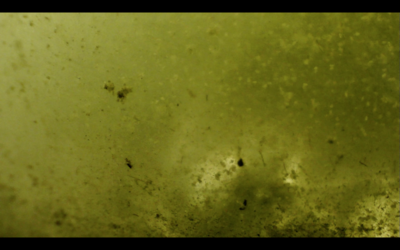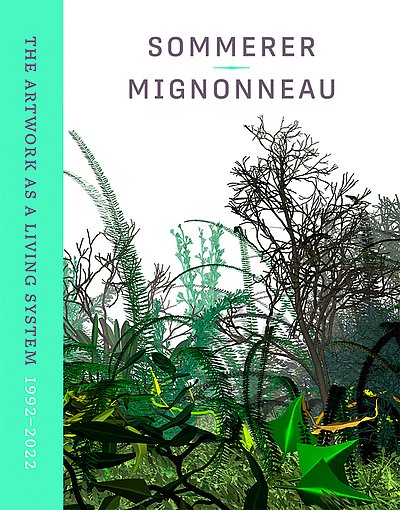Crossing the Bridge - Interface Cultures at Ars Electronica 2022
7. bis 11. September 2022 JKU Campus, Keplergebäude
Interface Cultures Studierende präsentieren im Rahmen der ars electronica 2022 ausgewählte Arbeiten.
Der Kunstuni Campus bei der Ars Electronica ist der ideale Ort um internationale Kontakte zu knüpfen, neue Studierenden zu akquirieren, Partnerschaften zu pflegen und sich über den neuesten Stand in der Medienkunst auszutauschen. Für das Departement Interface Cultures ist er sein 2004 ein wichtiger Backbone und eine zentrale Säule des internationalen Masterstudienganges.
Just as neighboring nations can develop separate cultures - in part due to forces ofnature that separate them such as rivers and mountains, art and science often present themselves as divided into two different cultures and languages. Paradoxically, the construction of bridges, as well as other vehicles intended to facilitate communication between different cultures, were projects originally assigned to artist-scientists. But just as bridges can be built, they can also be destroyed. And indeed, up to this day it seems that there are still too many bridges to be built, as well as others more fragile that need to be reinforced.
The linguistic divide between the arts and sciences began at the end of the Enlightenmentera, at the end of the 19th century. It’sthen when the term „science“ began to be used in its narrowest sense, referring only to the „physical“ or „natural“ sciences. The Romantic movement of the time and its aesthetic perspective served as acounterpoint to utilitarianism and instrumental rationality through which the ideas of the Enlightenment gained theoretical legitimacy and influenced the modern industrial age. In fact, the paradigm ofthe arts and sciences divide has accompanied us until today, with thegreatest danger of these disciplines undoubtedly lying in their lack of articulation.
Within the artistic practices, for example, many of its most influential philosophers and theorists have made use of scientific language and terminology, often interpreting data and playing with their language in ways that have only succeeded inalienating the scientific community. Also, many contemporary artistic products take on theair of something independent and esoteric.
Perhaps this is where our artists, through their practice, making use of new technologies as well as engaging in the critical analysis of their social and cultural impact on our environment, contribute to reinforce such bridges. These artists, in constant dialogue between sides, are in a privileged position, nurturing and contributing to the articulation between different disciplines, as well as fostering their dissemination and social and cultural understanding.
Much of this work is carried out inside the universities. The academic world allows its artists to come into contact with a multitude of disciplines. To communicate effectively in these contexts, artists must learn the specific protocols and languages of these disciplines. The challenge, as Victoria Vesna states, is to do so without losing the intuitive and „wild“ aspect inherent in artistic practices. This way, many contemporary artists have left aside the traditional processes of artistic production and distribution linked to conventional art markets, to make art based on the creation of their own aesthetic systems: organizing resources, media, fostering collaboration—both interdisciplinary and even interspecies, allowing all their participants to experience art in a new, questioning, responsible, sustainable, amplified and empowering way.
For that reason, this year the Interface Cultures department leaves its own comfort zone of the Art University, and mentally, conceptually and physically crosses the bridge, bringing along a selection of its latest student projects right to the center of the JKU campus. And what better occasion for this than the celebration of the 43th edition of the international Ars Electronica festival in Linz, a festival with a long tradition of crossing disciplines by constantly exploring the impact of art and technology into daily life and society. We strongly believe that by engaging, discussing and communicating with international festival visitors new unexpected paths can be taken and new bridges and connections can be built.
Präsentiert werden:
Pepe Reyes Caballero (ES) He loved me /he loved me not; Inte ractive Installation (2022)
Noor Stenfert Kroese (NL) Fading Colours (2022)
MARIA ORCIUOLI (IT) RZ PISCIUM IS AN INSATIABLE EATER OF WORLDS; Videoinstallation (2019-2022)
SARA KONIAREK (AT) DEEPFAKESONDER; Interactive Installation (2022)
Barbara Jazbec (SI) The Uncanny TV; Interactive Installation (2022)
Kevin Blackistone (US) Exquisite Corpus (2022)
Indiara Di Benedetto (IT) Future Memories of Deep Water; Installation (2021-2022)
Daniel Fischer (AT) Spectral Surrounding; live radio frequency light array (2022)
Katherine Romero M. (CO) The Checkpoint A storytelling device (2022)
Kristina Tica (RS) PROMPT: WAR STORIES (2022)
Jelena Mönch (DE) Externalization (2022)
Peter Schloss, Sebastian Sprenger (DE) Per aspera adacta; ONGOING, I, (2022)
Linaá Pulido Barragán (CO) Plántula (2022)
Maria Dirneder (AT) Intangible Bubbles Calling for Aphrodite (2022)
Maria Konstantinova (RU) Soup Kitchen a recipe of one bright day (2022)
Kathrine Hardman (US) Woven Memories Hairy Situation Vol . 3 (2022)
Alejandro Quiñones Roa (CO) SOFT PRESS, ONGOING, I, (2022)
DAPHNE XANTHOPOULOU (GR) STONES ARE ANGELS (2022)
Smirna Kulenovic DANU
Vahid Qaderi, Razieh Kooshki (IR) Cluster; Audio Visual Performance (2022)
Vanessa V(ozzo) (IT) PHOTOSYNTHETIC YOU Workshop_outdoor (in nature) / Duration: 2 hours (2022)
LEONARDO LASER LINZ - Die Gartenlaube Vol . III, Danube Songs 2 , 8. September 2022, 12.30 Uhr Ars Festival University, JKU Campus
BOOK PRESENTATION Christa Sommerer & Laurent Mignonneau: The Artwork as a Living System 1992-2022 , 11. Sept 2022 12 noon, OK Center, Mediathek, 4th floor
various artists UNDERWATER LILIES (2022)
Chris Ziegler MOVEMENT ROBOTICS, Workshop (2022); 8. Sept. um 21.00 Uhr im Redsapata Tanzfabrik, Saal 1, Sonnensteinstr. 11-13, Eingang Reindlstraße, 4. Stock (Aufzug), 4040 Linz
Razieh Kooshki, Vahid Qaderi Miragique, 3D generative and interactive visuals alongside Kaoru Tashiro; Deep Space 8K, Ars Electronica Center
Exhibiting Artists: Alejandro Quiñones Roa, Barbara Jazbec, Christa Sommerer & Laurent Mignonneau, Daniel Fischer, Daphne Xanthopoulou, Indiara Di Benedetto, Jelena Mönch, Katherine Romero M., Kathrine Hardman, Kevin Blackistone, Kristina Tica, Linaá Pulido Barragán, Maria Dirneder, Maria Konstantinova, Maria Orciuoli, Noor Stenfert Kroese, Pepe Reyes Caballero, Peter Schloss, Razieh Kooshki, Sara Koniarek, Sebastian Sprenger, Vahid Qaderi, Vanessa V(ozzo)
Interface Cultures Faculty: Christa Sommerer, Laurent Mignonneau, Manuela Naveau, Fabricio Lamoncha, Michaela Ortner, Gertrude Hörlesberger
Production /Design Team: Sara Koniarek, Juan Pablo Linares, Indiara Di Benedetto, Doğuş Karlık
